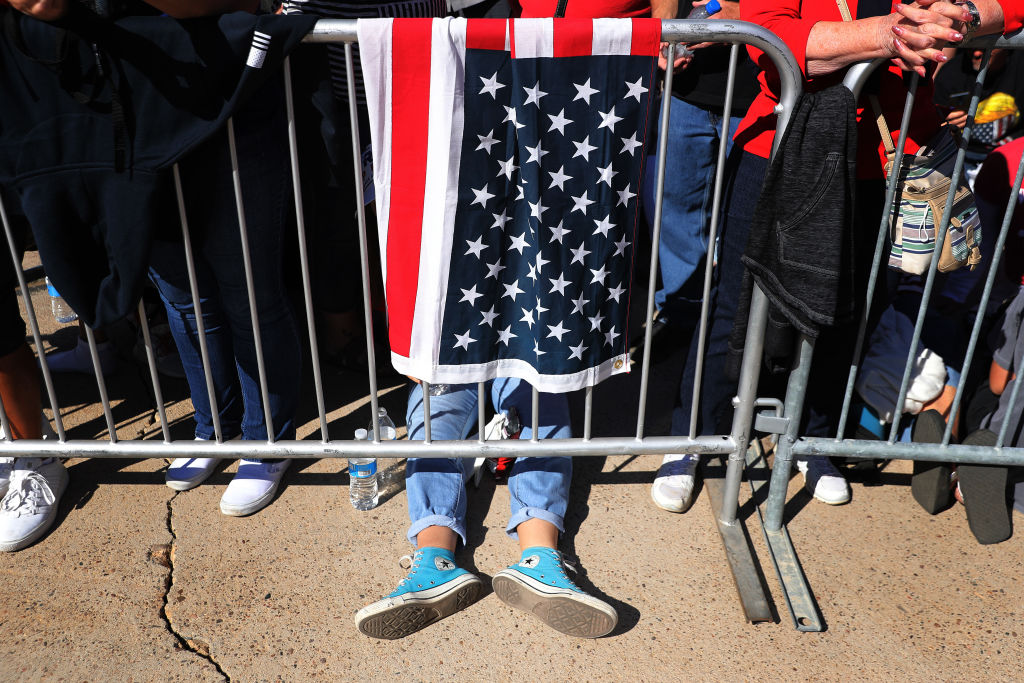In the closing days of the presidential campaign, Donald J. Trump is jetting around the country at a breakneck pace as he attempts another come-from-behind victory. He will headline events in Michigan, Southeast Florida and Western Pennsylvania. He’ll rally his supporters in Green Bay, Wisconsin; Rome, Georgia; and Opa-locka, Florida.
As of publication, he’s scheduled to visit eight states and as many as 16 counties, making his case for re-election from Friday through Monday, according to his campaign website. He will promise to make America great again, again – and put the COVID crisis in the rearview mirror. His downplaying of the pandemic has rubbed many voters the wrong way as the country experiences a spike in COVID cases over the past two weeks and faces a mounting death toll that now stands at nearly 230,000.
But there is another weak link in the president’s closing argument. The pre-COVID economy, the “best economy ever,” was not as strong as advertised. And that fact is manifest in the president’s own get-out-the-vote travel schedule.
Under his watch, wage growth actually slowed in most of the places he has visited or will touch down in between October 30 and November 2. On average, residents in 11 of the 16 counties on Trump’s final campaign tour saw slower annual real wage growth during the first three years of the Trump administration when compared to the last three years of the Obama Administration, according to U.S. Bureau of Labor Statistics data analyzed by the Economic Policy Institute and shared with Capital & Main.
The slower-growing counties he’ll visit include Grand Traverse, Oakland, Kent and Macomb counties in Michigan; Berks, Luzerne and Butler counties in Pennsylvania; Catawba County, North Carolina; Brown County, Wisconsin; Floyd County, Georgia; and Miami-Dade County in Florida. Meanwhile, Cumberland County, North Carolina; Olmsted County, Minnesota; Kenosha County, Wisconsin; Dubuque County, Iowa; and Lycoming County, Pennsylvania, saw faster growth under Trump.
The slower wage growth experienced by those living in these counties is no mere fluke. An EPI analysis published this month showed that, on average, most counties in the U.S. saw slower inflation-adjusted wage growth during the first three years of the Trump administration than they did during the last three years of the Obama administration.
Trump’s defenders have credited the massive 2017 tax cut for the record-low rates of unemployment the country experienced before COVID, and the fact that wages were finally beginning to rise for the lowest paid workers. But Ben Zipperer, an economist with EPI, described that tax cut as a “wildly inefficient” giveaway to the rich and credits state minimum wage policies with helping to raise wages for those at the bottom of the labor market.
“There are a lot of things that the administration and Congress could have done to stop that slowdown from happening,” Zipperer told Capital & Main, pointing to the president’s failure to deliver on an infrastructure plan and his administration’s attack on labor protections that could have bolstered the bargaining power of workers during a time when the economy was expanding.
The EPI analysis paid special attention to swing counties – those counties that voted twice for Obama before voting for Trump in 2016. The vast majority of those swing counties – 67% – saw slower wage growth during Trump’s first three years than during Obama’s last three years. Even more striking, swing counties located in one of the 13 swing states, as identified by The Cook Political Report, fared even worse, with 77% experiencing slower wage growth under Trump. (Residents in other counties that tend to be firmly in the Democratic or Republican camp experienced slower real wage growth on average under Trump as well.)
Of course, the pandemic-induced recession has made it even harder for Trump to prosecute his economic case for re-election in the waning days of his campaign. At a midday rally on Thursday in Tampa, Florida, attended by thousands, he described economic statistics as “boring” and turned his attention to Hunter Biden, the former vice president’s son and a favorite focus of attack.
Copyright 2020 Capital & Main
Top photo: President Trump steps off of Air Force One as he arrives for a campaign rally at Rochester International Airport October 30 in Rochester, Minnesota. Photo by Chip Somodevilla/Getty Images.




